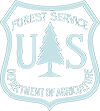Cultural Values
Click on a Value below to see what Actions you can take.Honoring Cultural Values and Benefitting from Traditions
Honoring Cultural Values and Benefiting from Traditions is one of the values identified in the Cohesive Strategy in the Southeast. While developing fire management plans managers need to realize many plant communities in the South depend on fire to thrive and grow, and traditionally land managers have maintained this fire-based ecosystem. Only recently with new land managers, the importance of wildfire has gotten lost along the way. We need to come together to renew the importance of prescribed burning by engaging those working in this environment and others who have not previously considered themselves stakeholders in wildland fire management.
The following actions contain additional tasks that may be appropriate for you to be a part. Each describes the activity along with links and resources that will be useful in moving forward.
There are 9 Actions Leading to This Value. Click on an action below to see how you can get involved and make a difference.
-
Utilize prioritization in Southern Wildfire Risk Assessment (SWRA) and other efforts to identify and treat wildland fuels to create tactical fuel breaks in areas that facilitate tactical defense of human communities or ecological values and services from wildfire.
Utilize SouthWRAP to target fuels treatments.
Use of alternative management techniques to treat wildland fuels where prescribed fire is not feasible or appropriate.
-
Work with landowners to manage land for hazardous fuels reduction to reduce wildfire risk.
Create prescribed burn associations to increase prescribed fire.
- Prescribed Fire Council (PFC)
- Southern Group of State Foresters (SGSF)
Target underserved landowners and develop strategies to address high risk landscapes.
-
Use technology to inform decisionmakers on wildland fire in a timely manner.
Use cost-effective technology to coordinate between fire suppression agencies.
Utilize and promote SouthWRAP (include web address/link)
For more information, visit http://www.southernwildfirerisk.com
Publicize fire management activities on public land.
- Southern Group of State Foresters (SGSF)
- U.S. Department of the Interior (DOI)
- U.S. Forest Service (USFS)
Expand and protect federal land management that promotes prescribed burning.
- U.S. Department of the Interior (DOI)
- U.S. Forest Service (USFS)
Use technology to track prescribed burning to measure impact on the ground.
Refine work collected from the NSAT and collection of data from the states.
- U.S. Forest Service (USFS)
Utilize science data as a tool to address the needs and tradeoffs involved in addressing fire at the community level. (link to NEMAC)
- Regional Strategy Committee (RSC)
- U.S. Forest Service (USFS)
-
Work with landowners to manage lands to be resilient to wildfire while supporting traditional forest products markets.
Make policy changes to federal programs to further expand fuels reduction work.
Integrate programs between urban forestry and forest management to target small woodlot management and fuels reduction.
- Southern Group of State Foresters (SGSF)
- U.S. Forest Service (USFS)
Ease access to restoration funding after wildfires on both public and private lands.
Understand impact of taxes to landowners ability to manage lands.
Identify cultural values in local CWPPs.
Utilize SRS info on family forest opportunities to manage for wildfire risk reduction.
Host "Community Days" at Department of Defense (DoD) installations.
Identify cultural values in local CWPPs and related intergovernmental planning documents
- National Association of Counties (NACO)
- Southern Group of State Foresters (SGSF)
- U.S. Department of the Interior (DOI)
- U.S. Forest Service (USFS)
Encourage interactive educational programs that highlight the multicultural heritage of fire in the Southeast.
- U.S. Forest Service (USFS)
Integrate programs between urban forestry and forest management to address wildfire.
Encourage landowners to maintain fuel treatments that provide adequate protection.
- Bureau of Indian Affairs (BIA)
Encourage interactive educational programs at both the government and non-governmental levels that highlight the multicultural heritage of fire in the Southeast.
-
Coordinate between landowners and managers to address wildland fire.
Work with planners/developers to establish best practices at all levels.
-
Keep prescribed fire as a valid management tool through working with regulatory agencies.
Work with regulatory agencies to reduce constraints on prescribed burning.
- Southern Group of State Foresters (SGSF)
- U.S. Department of the Interior (DOI)
- U.S. Forest Service (USFS)
Work with legislative officials to reduce constraints on prescribed burning.
- Prescribed Fire Council (PFC)
- Southern Group of State Foresters (SGSF)
Utilize and promote best burning practices
- Forest Landowners Association (FLA)
- Prescribed Fire Council (PFC)
- Southeastern Association of Fish and Wildlife Agencies (SEAFWA)
- Southern Group of State Foresters (SGSF)
- The Association of Consulting Foresters (ACF)
- U.S. Department of Defense (DoD)
- U.S. Department of the Interior (DOI)
- U.S. Forest Service (USFS)
Continue to support the work of the SERPPAS air quality and prescribed fire working teams.
Work among appropriate agencies to expedite public alerts on smoke related issues.
- Southern Group of State Foresters (SGSF)
- U.S. Department of the Interior (DOI)
- U.S. Forest Service (USFS)
- air-quality-regulators
- wildland-and-structural-fire-departments
-
Encourage greater public smoke awareness through outreach and understanding.
Expand/create public awareness and education campaigns
Expand outreach in localized areas before prescribed fires.
- Southern Group of State Foresters (SGSF)
- U.S. Department of the Interior (DOI)
- U.S. Forest Service (USFS)
Collect success stories that highlight the benefits of prescribed burning operations compared to wildfires
- Fire Learning Network (FLN)
- Prescribed Fire Council (PFC)
- Regional Strategy Committee (RSC)
- The Nature Conservancy (TNC)
-
Control invasive species that alter fire regimes and ecosystem function.
Look to state forest and wildlife action plans to target high wildfire risk geographies.
Engage landowners in the identification and control/eradication of highly flammable invasive species.
Utilize FS Forest Health Program funds on areas of high wildfire risk.
- U.S. Forest Service (USFS)
Provide education programs/materials for homeowners and landowners that target the most destructive invasives.
-
Support efforts to increase prescribed burning for ecosystem restoration.
Address prescribed fire liability concerns.
Provide more assistance and/or incentives for prescribed burning.
Promote prescribed burning for wildlife through all conservation (fish and wildlife) programs.
Enhance Training Opportunities for consultants and practitioners.
Work with Landscape Conservation Coops on wildfire and prescribed burning opportunities.
Collect accurate statistics on prescribed fire use to aid in planning and insurance underwriting.
- Southern Group of State Foresters (SGSF)
- U.S. Forest Service (USFS)
Work with tribal elders to improve knowledge of fuel reduction project impacts on cultural values.
- Bureau of Indian Affairs (BIA)










